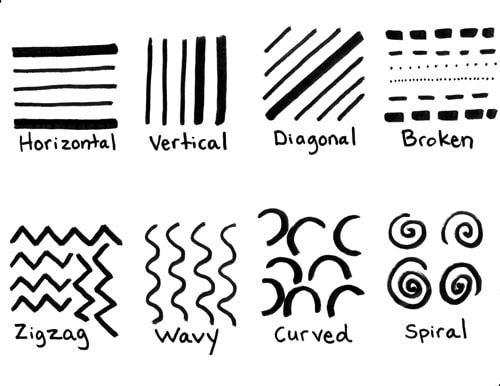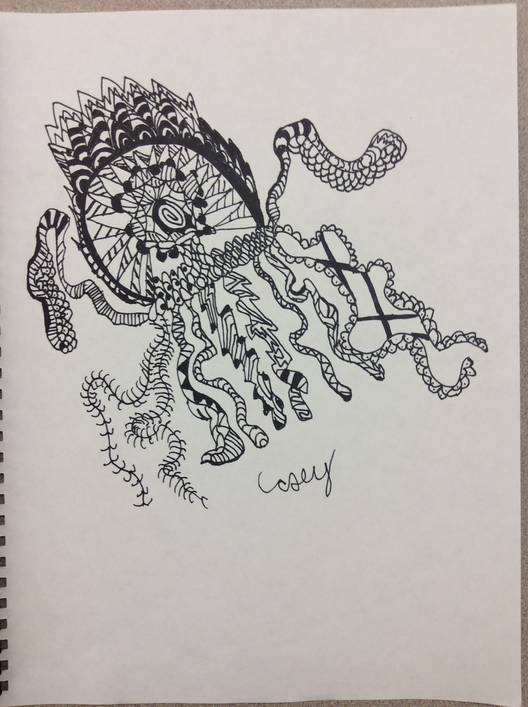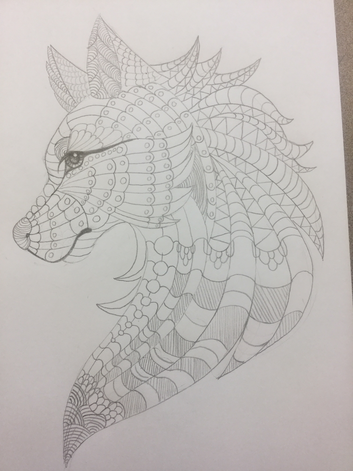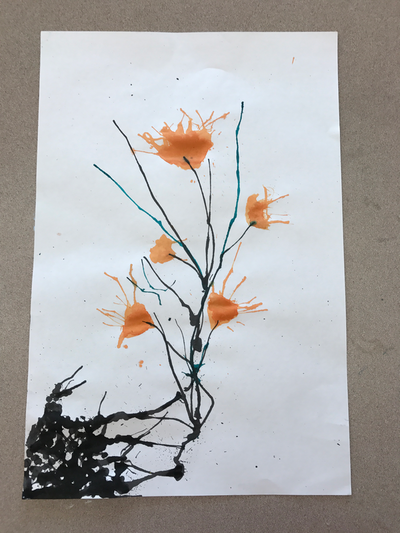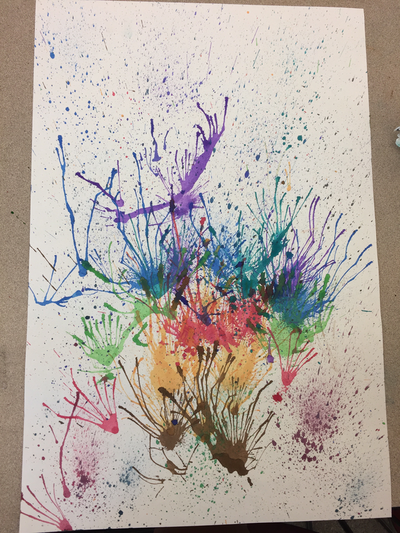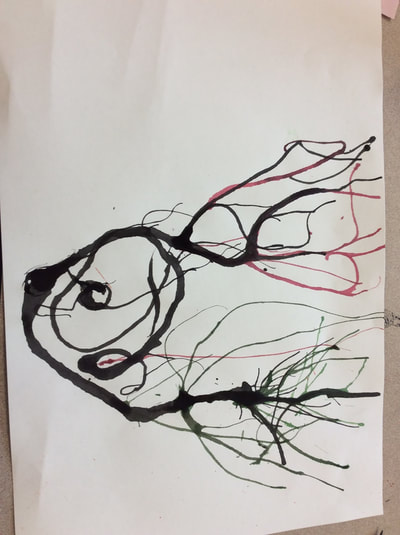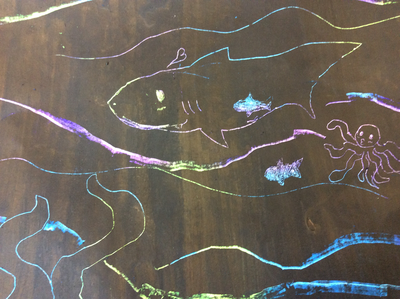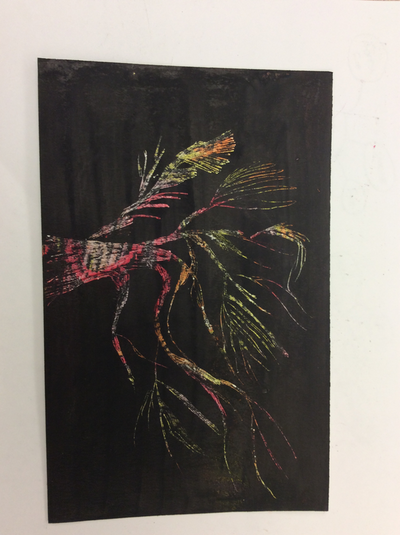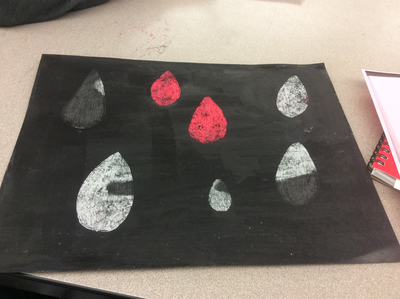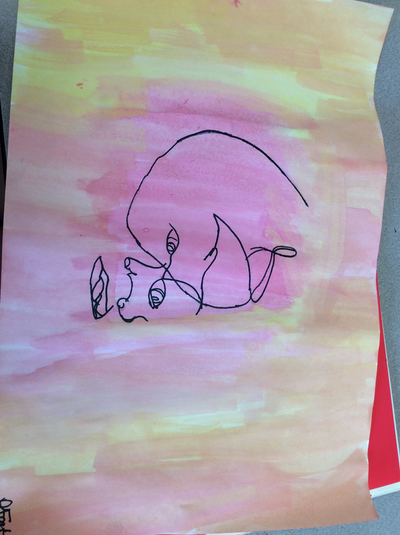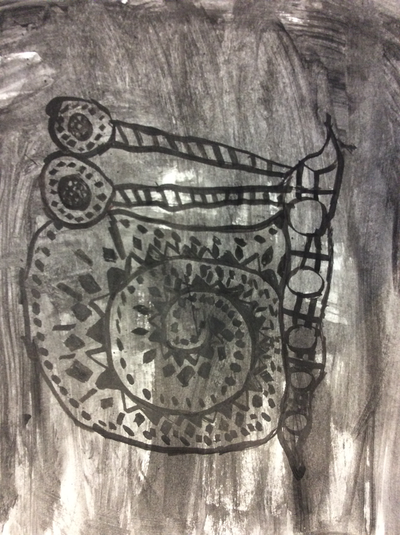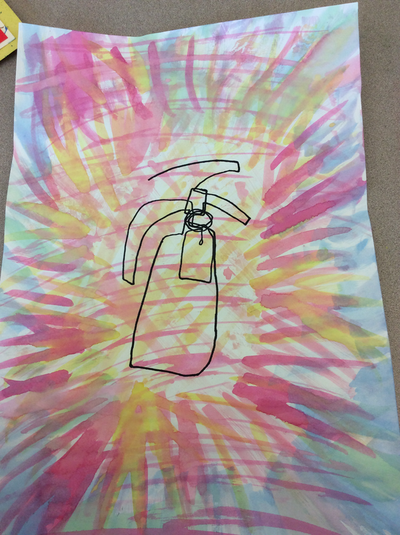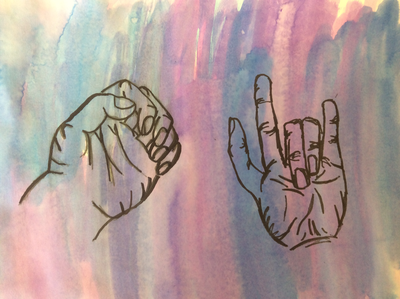Explorations in 2D design- Line
What are the types of line?
Visual Art Lesson Plan 2D Lesson Title: Line! Zentangles Grade: 9-12
Lesson Idea and Relevance: What are you going to teach and why is this lesson of importance to your students? How is it relevant to students of this age and background?
Zentangles introduces the 5 types of line, focusing on elements and principles of art and design. Teaching the five types of line is important for learners to know when creating their own work and analyzing work of others. Understanding that lines have different ways of being.
Essential Understanding (s): What are the “big ideas”? What specific understandings about them are desired?
Artists explore materials.
Artists use materials in various ways to express themselves.
Essential Question (s): What provocative questions will foster inquiry, understanding, and transfer of learning?
How many different types of line are there? In what ways would you use each line?
Did you know there are many variations of each type of line?
Outcomes - Students will know...What key knowledge and skills will students acquire as a result of this unit? ...Art history and culture; expressive features and characteristics of art; art materials, tools, and techniques? What should they eventually be able to do as a result of such knowledge and skill? ...Compare and contrast art work; analyze sketches?
Students will be able to:
Learners will be able to explore materials to develop the intent of creating expression.
Learners will be able to identify and use Line as an element of art.
Student Reflective Activity: Through what authentic performance task(s) will students demonstrate the desired understandings? How will students reflect upon and self-assess their learning?
During exploration learners will reflect throughout the process, as well as a short discussion at the end of the exploration. Learners will be able to express their findings and show their work to their peers in a table sharing moment.
Assessment Instrument (s): By what criteria will “performances of understanding” be judged?
Performance of understanding will be demonstrated through the creation and explanation of one authentic art product of exploration.
What did you notice about this method?? In what ways did you use the different types of line? In what ways would you use this in a larger work of art?
Ideation: How will you equip students, help them experience the key ideas, and explore the issues to generate ideas for their art work?
This is an exploration of materials. First try to fill some small spaces with different types of line. In what ways can you still make a horizontal line but change its form? What about a diagonal line? Can a line be organic?
Motivation: How will you hook all students and hold their interest?
Has anyone heard of Zentangles? Show example. Talk about different ways to fill space, that there are different types of line- contest for identifying the different types of line.
Pre-assessment: How will you help the students know where the unit is going and what is expected? Help the teacher know where the students are coming from (prior knowledge, interests)?
Verbal questioning: How many of you have heard of Zentangles?
Examples with questions: What do you notice about this piece of art? Are there any lines? Where? How many different types of lines do you see here?
Materials, Resources, Safety:
Lesson plan
Paper – different sizes
Zentangle video
Sketchbooks
Sharpies
Pens
Paper towel
Demo plan
Minimum 60 minutes
5 minutes for clean up
Instruction: What content knowledge (know) and skills (do) will be taught for students to be successful in this art experience? Provide opportunities to rethink and revise their understandings and work? Allow students to evaluate their work and its implications? (Understand) Include literacy and numeracy?
I do: Introduce the technique, types of line, invite them to see how many variations of the five types of line they can make. Show them how to build their squares in their sketchbook. Show them larger frameworks of zentangles. Video of full sheet zentangle in process. How the larger frame is divided into much smaller frames with different patterns.
They do: Explore with 5 square practice. Then apply explorations in a larger framework- choice of animal or organic shape, fill with variations of line.
We do: share explorations and studio issues. Check in for time use.
Accommodations: How is the lesson tailored (personalized) to the different needs, interests, and abilities of learners? ...Access (Resources and/or Process) and Expression (Products and/or Performance)?
Exploratory exercises are individualized in nature. Each learner can move at their own pace through the experience.
APPENDIX:
http://paintingsilvercreek.weebly.com
Lesson Idea and Relevance: What are you going to teach and why is this lesson of importance to your students? How is it relevant to students of this age and background?
Zentangles introduces the 5 types of line, focusing on elements and principles of art and design. Teaching the five types of line is important for learners to know when creating their own work and analyzing work of others. Understanding that lines have different ways of being.
Essential Understanding (s): What are the “big ideas”? What specific understandings about them are desired?
Artists explore materials.
Artists use materials in various ways to express themselves.
Essential Question (s): What provocative questions will foster inquiry, understanding, and transfer of learning?
How many different types of line are there? In what ways would you use each line?
Did you know there are many variations of each type of line?
Outcomes - Students will know...What key knowledge and skills will students acquire as a result of this unit? ...Art history and culture; expressive features and characteristics of art; art materials, tools, and techniques? What should they eventually be able to do as a result of such knowledge and skill? ...Compare and contrast art work; analyze sketches?
Students will be able to:
Learners will be able to explore materials to develop the intent of creating expression.
Learners will be able to identify and use Line as an element of art.
Student Reflective Activity: Through what authentic performance task(s) will students demonstrate the desired understandings? How will students reflect upon and self-assess their learning?
During exploration learners will reflect throughout the process, as well as a short discussion at the end of the exploration. Learners will be able to express their findings and show their work to their peers in a table sharing moment.
Assessment Instrument (s): By what criteria will “performances of understanding” be judged?
Performance of understanding will be demonstrated through the creation and explanation of one authentic art product of exploration.
What did you notice about this method?? In what ways did you use the different types of line? In what ways would you use this in a larger work of art?
Ideation: How will you equip students, help them experience the key ideas, and explore the issues to generate ideas for their art work?
This is an exploration of materials. First try to fill some small spaces with different types of line. In what ways can you still make a horizontal line but change its form? What about a diagonal line? Can a line be organic?
Motivation: How will you hook all students and hold their interest?
Has anyone heard of Zentangles? Show example. Talk about different ways to fill space, that there are different types of line- contest for identifying the different types of line.
Pre-assessment: How will you help the students know where the unit is going and what is expected? Help the teacher know where the students are coming from (prior knowledge, interests)?
Verbal questioning: How many of you have heard of Zentangles?
Examples with questions: What do you notice about this piece of art? Are there any lines? Where? How many different types of lines do you see here?
Materials, Resources, Safety:
Lesson plan
Paper – different sizes
Zentangle video
Sketchbooks
Sharpies
Pens
Paper towel
Demo plan
Minimum 60 minutes
5 minutes for clean up
Instruction: What content knowledge (know) and skills (do) will be taught for students to be successful in this art experience? Provide opportunities to rethink and revise their understandings and work? Allow students to evaluate their work and its implications? (Understand) Include literacy and numeracy?
I do: Introduce the technique, types of line, invite them to see how many variations of the five types of line they can make. Show them how to build their squares in their sketchbook. Show them larger frameworks of zentangles. Video of full sheet zentangle in process. How the larger frame is divided into much smaller frames with different patterns.
They do: Explore with 5 square practice. Then apply explorations in a larger framework- choice of animal or organic shape, fill with variations of line.
We do: share explorations and studio issues. Check in for time use.
Accommodations: How is the lesson tailored (personalized) to the different needs, interests, and abilities of learners? ...Access (Resources and/or Process) and Expression (Products and/or Performance)?
Exploratory exercises are individualized in nature. Each learner can move at their own pace through the experience.
APPENDIX:
http://paintingsilvercreek.weebly.com
Student artist examples
Line! Straw-Blown Lines
Your browser does not support viewing this document. Click here to download the document.
Line! Scratch boards
Your browser does not support viewing this document. Click here to download the document.
Line! Contours
| 2d_line-contours.doc | |
| File Size: | 42 kb |
| File Type: | doc |
